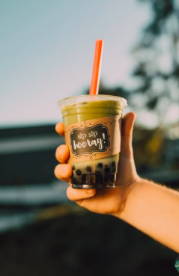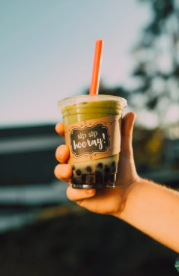There are three boba shops on one street in my college town of Chapel Hill, North Carolina.
At initial glance, all of these new boba shops that continue to open throughout the Triangle area can be labeled as a success and acceptance of the exponentially growing Asian population in this community.
But what if all of these boba places are actually doing the opposite? What if they’re actually dividing the Asian community?
Boba shops started out as a safe gathering place for young Asian Americans alike. During my senior year of high school, pre-pandemic, I would visit Boba Baba in Cary multiple times a week after school with my friends where we would do our homework, journal, and play cards. At the center of these visits was boba. The dessert served as a foundation for connection; not only was it a connection to friends, but it also connected us to our Asian culture where food equated love.
Recently, I’ve started to notice a shift in how boba is perceived. There is now boba-themed merchandise on every corner of the mall. Boba has turned into yet another commodity under white supremacist capitalism. When something like boba is pushed to the forefront of mainstream pop culture, it’s falsely presumed to be an all-encompassing representation. This is referred to as boba liberalism. In reality, boba liberalism centers East Asians, erases the rich history and culture of 48 countries, and neglects our collective bond and struggle.
Boba liberalism can also be applied to the sweet and easy issues that the Asian American population has chosen to confront. Sweet like the sugary tapioca drink, easy like how accessible the drink has become.
Many Asian Americans have viewed Vice President Kamala Harris as a win because she’s half Indian, therefore the first Asian VP in history. Yet, she proudly tells Central American migrants “Do not come” despite being a daughter of two immigrants. Ironically enough, the reason many people have to leave their home countries is because of the genocides, neoliberalism policies, and imperialist ideals that the United States government inflicted onto these countries.
Additionally, the release of Crazy Rich Asians in 2018 was seen as the pinnacle of Asian representation in Hollywood when it realistically exacerbated the model minority myth by portraying Asians as insanely wealthy. The film left behind Southeast Asians in the race for wealth and education as they continue to face the reaps of colorism, classism, and colonization. For example, Pew Research Center recorded a median of $85k for Asian Americans’ income in 2019 but if you break it down by ethnicity, Burmese Americans only have about $44k median income. The income disparity is the largest amongst the Asian American population in comparison to other racial groups.
Upper middle-class schools and suburbs love to boast about their diversity. In reality, their higher socioeconomic class pushes Black and Brown kids out of their classrooms and neighborhoods and aligns these upper middle-class Asians closer to whiteness. Do these white principals and realtors really care? Or are they using these Asians as tokens for their diversity pamphlets?
The popular #StopAsianHate has stood as a symbol for the most recent Asian American movement. Many have used it as the extent of their activism. However, this simple hashtag diminishes the severity of the issues our community faces to interpersonal moments rather than addressing centuries of systemic oppression.
In a coronavirus world, East Asians witnessed the hate crimes in their real life and online. After the Atlanta shooting, the entire community mourned the six Asian women killed by a white man who was having a “bad day.” In the summer of 2020 during the Black Lives Matter movement, the Asian community was forced to confront the longstanding anti-Blackness within our homes and to examine our privilege. It’s been made clear that this nation is plagued with a racial reckoning.
As we transition to a post-lockdown world, it is long overdue for all Asian Americans to finally recognize how we have simultaneously profited off and been harmed by white supremacy. Only then can we truly stand in solidarity as a Pan-Asian community with the rest of our BIPOC family. Only then can we truly tear down white supremacy and fight for all of our liberation. Boba liberalism is not the solution we are looking for.
The sweet and easy won’t cut it anymore.
 Britney Dao (she/her/hers) is a student at UNC Chapel Hill studying American Studies and Human Development & Family Studies. She loves writing and being creative, especially as a tool to heal, process, and advocate. She is passionate about fighting for social justice through an intersectional lens.
Britney Dao (she/her/hers) is a student at UNC Chapel Hill studying American Studies and Human Development & Family Studies. She loves writing and being creative, especially as a tool to heal, process, and advocate. She is passionate about fighting for social justice through an intersectional lens.


There are no comments
Add yours